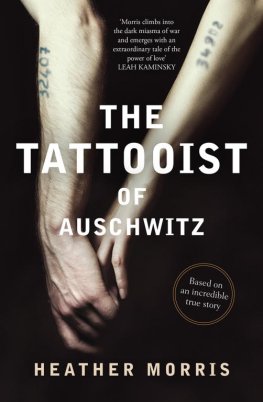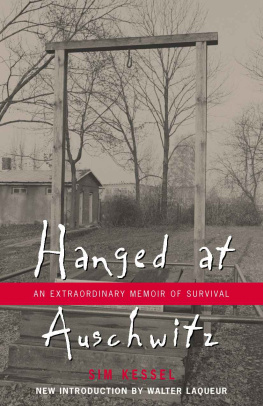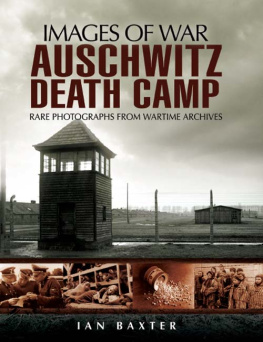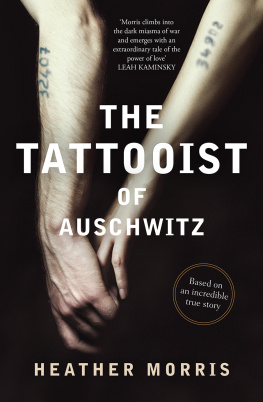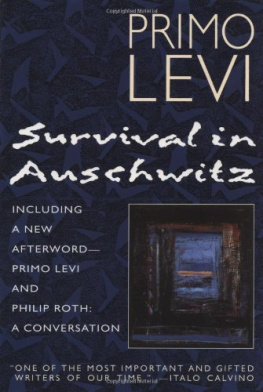Conversation Starters
for
Heather Morriss
The Tattooist of Auschwitz
By dailyBooks
Bonus Downloads
Get Free Books with Any Purchase of Conversation Starters

Every purchase comes with a FREE download!

or Click Here.

Scan Your Phone
A bout Us:
THROUGH YEARS OF EXPERIENCE AND FIELD EXPERTISE, from newspaper featured book clubs to local library chapters, dailyBooks can bring your book discussion to life. Host your book meets as we discuss some of todays most widely read books.
Copyright 2018 by dailyBooks. All Rights Reserved. Published in the United States of America
Disclaimer: This is an unofficial conversation starters guide. If you have not yet read the original work we encourage you to do so first before reading this Conversation Starters Product names, logos, brands, and other trademarks featured or referred to within this publication are the property of their respective trademark holders and are not affiliated with dailyBooks. The publisher and author make no representations or warranties with respect to the accuracy or completeness of these contents and disclaim all warranties such as warranties of fitness for a particular purpose. This guide is unofficial and unauthorized. It is not authorized, approved, licensed, or endorsed by the original book's author or publisher and any of their licensees or affiliates. No part of this publication may be reproduced or retransmitted, electronic or mechanical, without the written permission of the publisher.
Tips for Using dailyBooks Conversation Starters:
EVERY GOOD BOOK CONTAINS A WORLD FAR DEEPER THAN the surface of its pages. The characters and their world come alive through the words on the pages, yet the characters and its world still live on. Questions herein are designed to bring us beneath the surface of the page and invite us into the world that lives on. These questions can be used to:
- Foster a deeper understanding of the book
- Promote an atmosphere of discussion for groups
- Assist in the study of the book, either individually or corporately
- Explore unseen realms of the book as never seen before
Table of Contents
Introducing The Tattooist of Auschwitz
T he Tattooist of Auschwitz is a debut novel written by Heather Morris based on the real-life story of a Jewish Slovak who fell in love with a fellow prisoner while held captive in the Nazi death camp of Auschwitz during World War II. It is hailed as a story of survival, love, and hope.
Lale Sokolov was 26 when the Nazis came to his hometown in Slovakia to take the men away. Lale willingly offered himself to go with the Nazis hoping that his family will be spared. He had no idea of what awaited him. When he arrived at the camp, he was given the identity number 32407. Under Nazi orders, he worked constructing houses until he contracted typhoid. A fellow prisoner, a French man named Pepan, took care of him and eventually made him his assistant as a tattooer, or a tetovierer. Pepan taught him how to tattoo numbers on the prisoners and how to avoid getting into trouble with the Nazi soldiers. Lale learned how to keep his head down and stay quiet. Then Pepan mysteriously disappeared. Lale never learned what happened to his mentor. Eventually, he was assigned as the head tattooist in the camp due to his knowledge of many languages. He spoke German, Slovakian, Russian, French, Polish, and Hungarian. His position gave him a few advantages as a prisoner. He was given enough food, slept in a room of his own, and enjoyed the free time when there were no prisoners to be tattooed. But Lale never considered himself a Nazi collaborator. He knew that any day his privileges might be taken away from him. It was in one of his tattooing days, before Pepan's disappearance, that he met a young girl, the 18-year old Gita, whose arm he tattooed as she braved the pain. Her tattoo number was 34902. He fell in love with her that day and soon after, worked to get her extra food and better accommodations for her and her fellow prisoners. Lale's position enabled him to trade jewels given him by the prisoners for food from the village, which enabled the prisoners to survive.
Despite the harrowing conditions, Lale believed that he would survive prison camp. Gita, however, was less hopeful. Lale had to keep her hopeful and brave amid the depressing prison conditions. In 1944, Gita was allowed to leave the camp just before the Russians came. Lale left Auschwitz soon afterward with no notion how he could see Gita again. Circumstances enabled them to reunite and have a long, happy life together.
The book is the result of the author's regular weekly visits with Lale in his home in a Melbourne suburb. Morris visited him for three years and learned about his story, recording the details before he passed away in 2006. Morris says it took her three years to hear all the details from Lale because it took time for him to trust her to tell his story. Lale's fears and paranoia as a result of his Nazi camp experience prevented him from trusting Morris right away. Lale shares his story to Morris after so many years of keeping it to himself. He was in his 80s when he started talking to her. He feared that if he let others know of his time in Auschwitz, they would accuse him of collaborating with the Nazis. He decided to tell his story to Morris after his wife Gita died, sparing her of any harmful consequence his story might cause. Sokolov died in 2006. She said it also took time for Lale to "embark on the deep self-scrutiny that parts of his story required." The book reveals Lale's encounters with Nazi officers, including Josef Mengele, who frequented Lale's work area to choose his "patients" from newly arrived prisoners who were being tattooed. Lale said that Mengele often whistled opera tunes and would threaten Lale, saying "One day, tetovierer, I will take you, one day."
Morris says that Lale's story tallies with the research done by professional researchers who were employed to verify his information. The researchers also found out that Lale's parents died in the prison camps a month before he arrived. Documents containing Lale's name as listed among the prisoners were also found by the researchers. The book cites historical information about the practice of tattooing done by the Nazis on their Jewish prisoners. They started tattooing the prisoners who were not sent to the gas chambers from 1941 to 1943. Lale said he and his assistants tattooed hundreds of thousands of prisoners. The tattooing was limited to those who were held in Auschwitz and Birkenau. It is one of the harrowing symbols of the Holocaust, reminding the survivors and the world of the inhumanity of the Nazi regime. Lale and his assistants used a twin-needle tool for tattooing.
Next page






